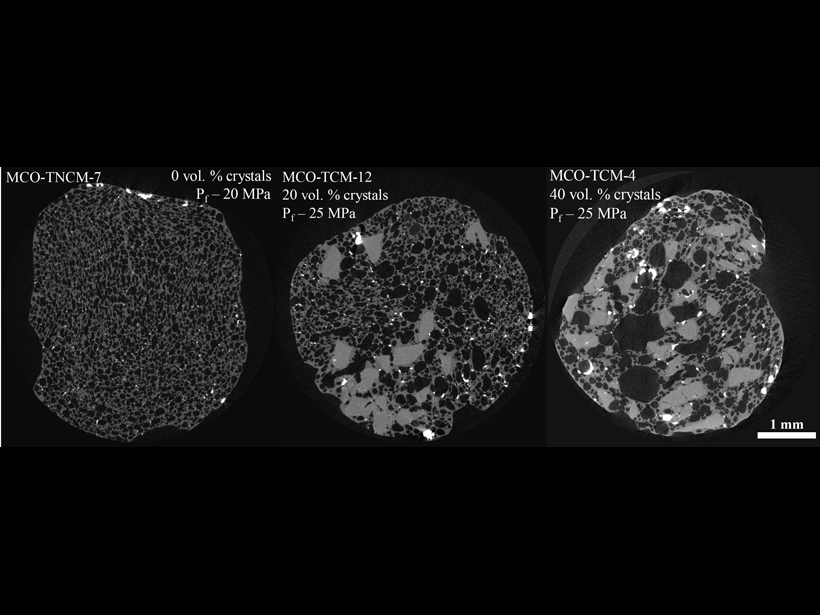Source: Geophysical Research Letters
Volcanic eruptions of hydrous and silica-rich (intermediate-felsic) magmas can cycle between Vulcanian-style explosions, lava dome extrusions, and dome collapse. The processes through which magmas degas during ascent depend on many factors, but the connectivity of bubble pathways ultimately controls how rapidly pressurized gas escapes. The critical threshold of gas permeability (the percolation threshold) in ascending intermediate to felsic magmas can be influenced by mineral crystallization.
Through laboratory experiments on crystal-bearing synthetic magmas, deGraffenried et al. [2019] show that at as little as 20 per cent crystallization can reduce the percolation threshold to just over 50 per cent porosity of the magma volume, creating connected bubble pathways that enhance degassing. That lowered threshold likely plays an important role in transitions between effusive and explosive eruption styles in hydrous, crystal-bearing magmas.
Citation: deGraffenried, R. L., Larsen, J. F., Graham, N. A., & Cashman, K. V. [2019]. The influence of phenocrysts on degassing in crystal‐bearing magmas with rhyolitic groundmass melts. Geophysical Research Letters, 46. https://doi.org/10.1029/2018GL081822
—Steven Jacobsen, Editor, Geophysical Research Letters
Text © 2019. The authors. CC BY-NC-ND 3.0
Except where otherwise noted, images are subject to copyright. Any reuse without express permission from the copyright owner is prohibited.

